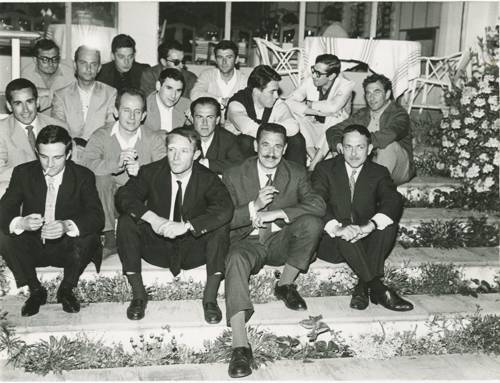
FAQ About The Cultural Impact of New Wave Cinema

What is New Wave cinema?
New Wave cinema refers to a collection of film movements across different countries that emerged in the mid-20th century. It is characterized by its innovation in narrative techniques, stylistic experimentation, and a general break from the traditional style of filmmaking, embracing a more personal and auteur-driven approach.

Which countries were most influential in the New Wave cinema movement?
The most influential countries in the New Wave cinema movement were France, Italy, Germany, and Japan. Each country developed its own unique style and thematic focus, but they all shared a commitment to breaking away from the commercial filmmaking norms of the time.

What are some key characteristics of New Wave cinema?
Key characteristics of New Wave cinema include innovative narrative structures, a focus on real locations rather than studio sets, naturalistic performances, self-reflexivity, and an emphasis on the director's personal vision or thematic concerns.

How did New Wave cinema influence global filmmaking?
New Wave cinema influenced global filmmaking by encouraging filmmakers to experiment with narrative structure, use more personal storytelling, and adopt a more independent and critical approach to cinema. This led to a more diverse and dynamic film landscape worldwide.

Can you name some prominent directors associated with New Wave cinema?
Some of the most prominent directors associated with New Wave cinema include François Truffaut, Jean-Luc Godard, Federico Fellini, Michelangelo Antonioni, and Nagisa Oshima. Each of these directors contributed significantly to the movement's international reputation and influence.

What role did technology play in the development of New Wave cinema?
Advancements in technology, particularly the development of lightweight cameras and improved sound equipment, played a crucial role in the development of New Wave cinema. These innovations allowed filmmakers to shoot on location with greater ease and to capture more spontaneous and realistic performances.

How did French New Wave cinema differ from other national New Wave movements?
French New Wave cinema was particularly noted for its radical narrative and stylistic approaches, such as jump cuts, direct address to the camera, and thematic exploration of existentialism and romantic disillusionment. Other New Wave movements, while sharing a similar spirit of innovation, often focused on distinct cultural and political concerns.

What is the significance of auteur theory in the context of New Wave cinema?
Auteur theory, which holds that the director is the 'author' of a film and its primary creative force, is central to New Wave cinema. This theory allowed directors greater creative freedom and emphasized their personal vision, leading to more individualistic and innovative works compared to mainstream cinema.

How did New Wave cinema affect narrative structures in film?
New Wave cinema often rejected traditional linear storytelling in favor of fragmented or non-linear narrative structures. This approach allowed for greater exploration of themes like memory, subjectivity, and reality, influencing countless filmmakers in the decades since.

Why is Jean-Luc Godard considered a pivotal figure in New Wave cinema?
Jean-Luc Godard is considered a pivotal figure in New Wave cinema due to his revolutionary approach to filmmaking, including his use of jump cuts, non-chronological narrative, and breaking the fourth wall. His works, such as "Breathless," are seen as essential to the development of the movement's artistic lexicon.

What impact did New Wave cinema have on film criticism and theory?
New Wave cinema had a significant impact on film criticism and theory by challenging conventional notions of film as merely entertainment. It prompted critical discussions around cinema as an art form, the role of the director, and the potential for film to express complex ideas and individual perspectives.

How did New Wave cinema inspire future film movements?
New Wave cinema inspired future film movements, such as the American New Hollywood of the 1970s, by demonstrating the creative possibilities of an auteur-driven approach and encouraging a focus on more personal and explorative filmmaking, departing from commercial conventions.

What are some iconic films from the New Wave cinema movement?
Some iconic films from the New Wave cinema movement include "Breathless" and "The 400 Blows" from the French New Wave, "8½" from the Italian movement, and "Tokyo Story" from the Japanese New Wave. These films are celebrated for their innovation and influence on world cinema.

Did New Wave cinema movements collaborate with each other internationally?
While New Wave cinema movements were primarily national in focus, there was a significant exchange of ideas and influences among them. International film festivals and publications such as Cahiers du Cinéma facilitated dialogue and shared perspectives between these movements.

How did New Wave cinema address political and social themes?
New Wave cinema often addressed political and social themes by critiquing the status quo and exploring contemporary issues such as class struggles, youth culture, and authoritarianism. This was a departure from the more escapist films of earlier eras, reflecting a desire for change and social commentary.

Why are location shooting and natural lighting significant in New Wave cinema?
Location shooting and natural lighting are significant in New Wave cinema because they contribute to the realism and authenticity that these filmmakers sought. By eschewing studio sets and artificial lighting, directors could capture the true essence of their environments, enhancing the viewers' connection to the story and its characters.

How did Japanese New Wave differ from its Western counterparts?
Japanese New Wave differed from its Western counterparts in its emphasis on unconventional narratives and its engagement with Japanese culture and post-war issues. Directors like Nagisa Oshima and Shohei Imamura explored taboo subjects and sought to break away from the cinematic traditions of Japan.

Can you explain the concept of "breaking the fourth wall" and its use in New Wave cinema?
"Breaking the fourth wall" refers to a technique where characters directly address the audience, acknowledging the film's artifice. This was used in New Wave cinema, particularly by directors like Jean-Luc Godard, to disrupt the illusion of realism and engage viewers in a more direct and thought-provoking manner.

What was Cahiers du Cinéma and its role in New Wave cinema?
Cahiers du Cinéma was a highly influential French film magazine that played a crucial role in the development of New Wave cinema. It provided a platform for young filmmakers and critics, such as François Truffaut and Jean-Luc Godard, to discuss their ideas and critique conventional cinema, thereby fueling the movement's growth.

How did Italian Neorealism influence New Wave cinema?
Italian Neorealism influenced New Wave cinema through its focus on everyday life, use of non-professional actors, and on-location shooting. These elements were embraced by New Wave filmmakers as part of their effort to present a more authentic and personal vision of human experiences.
